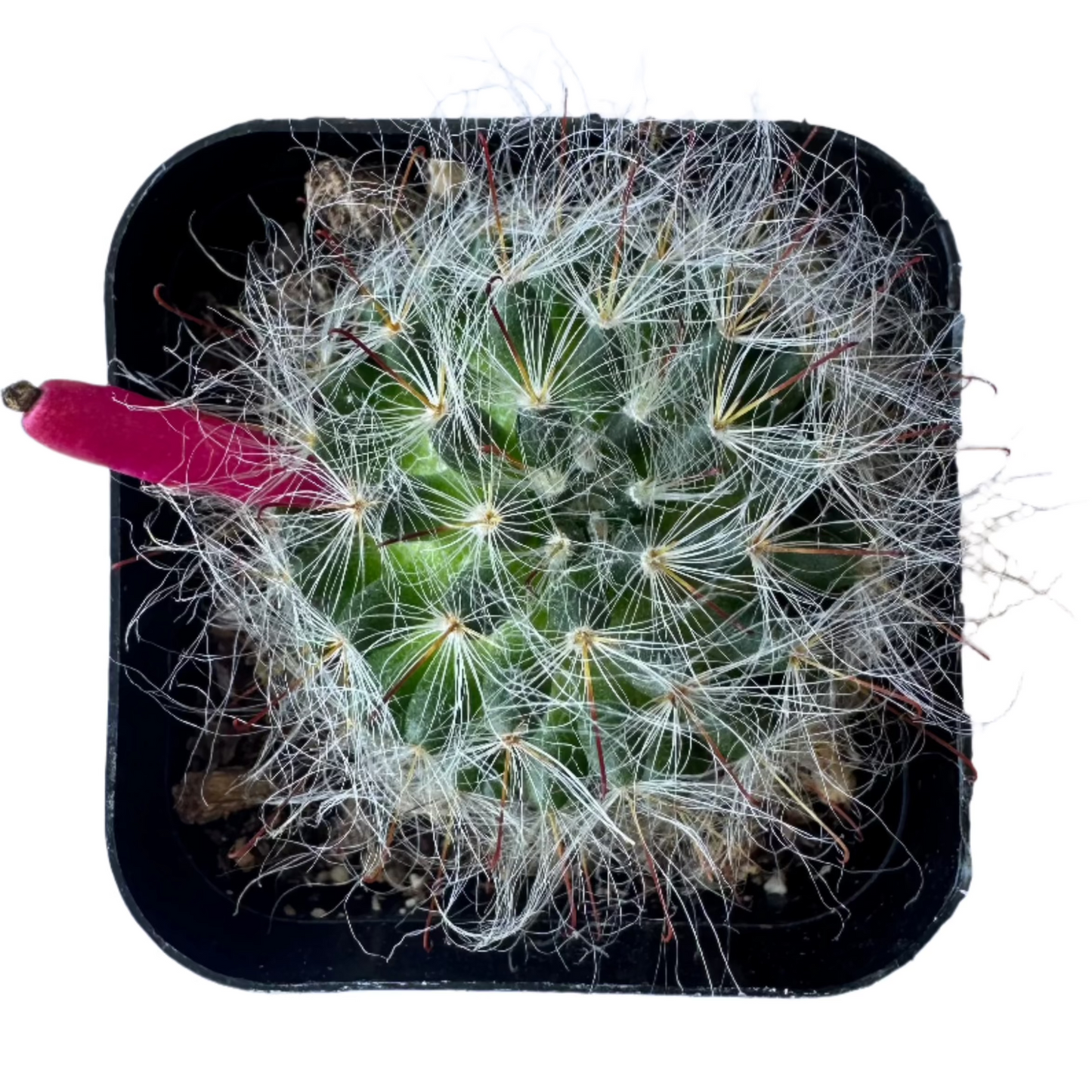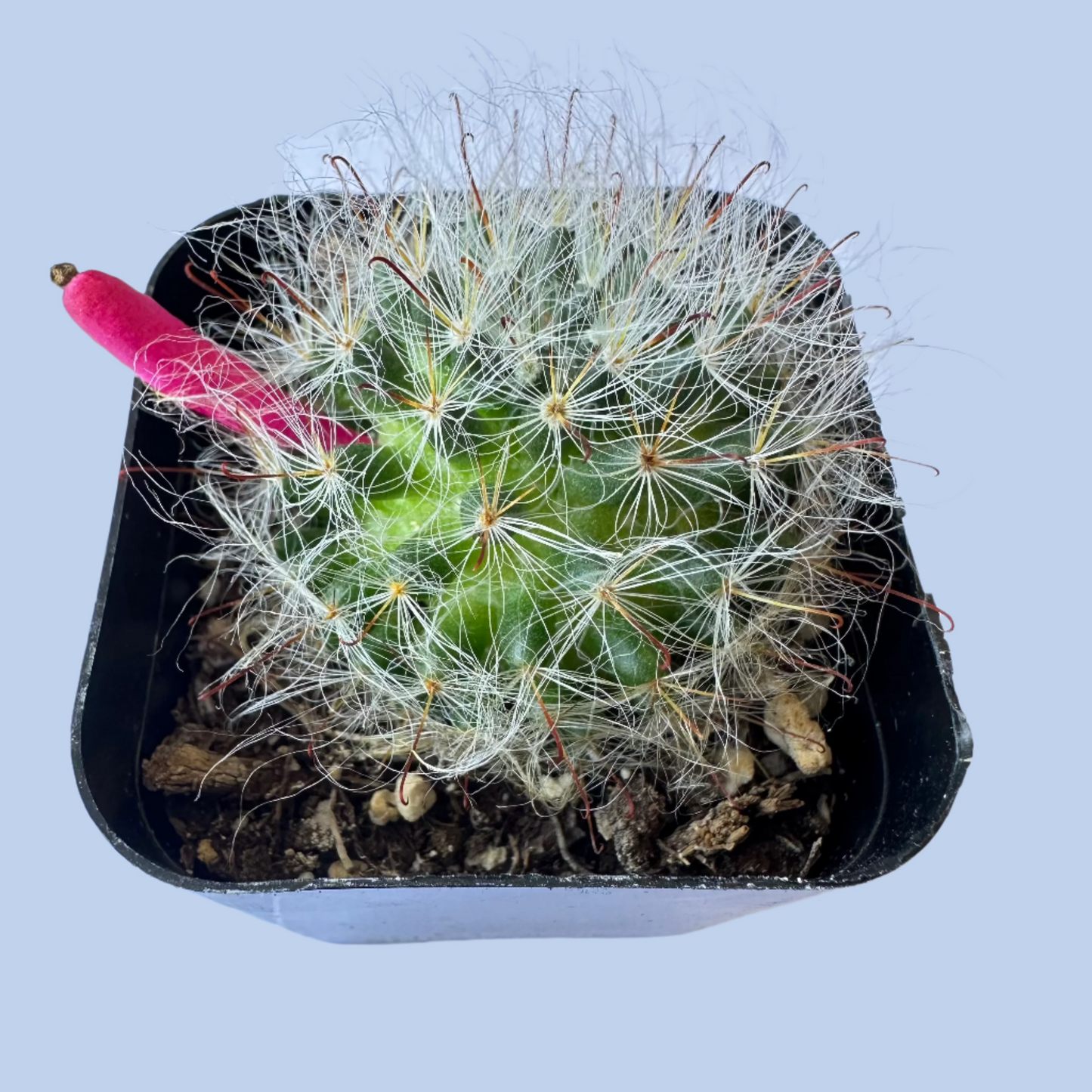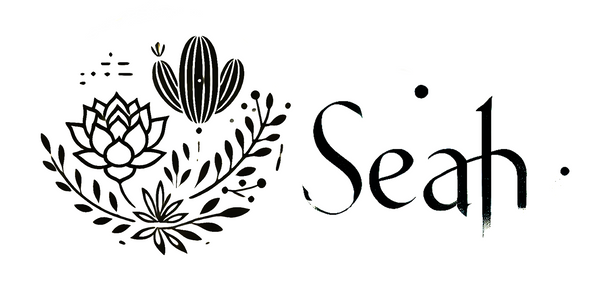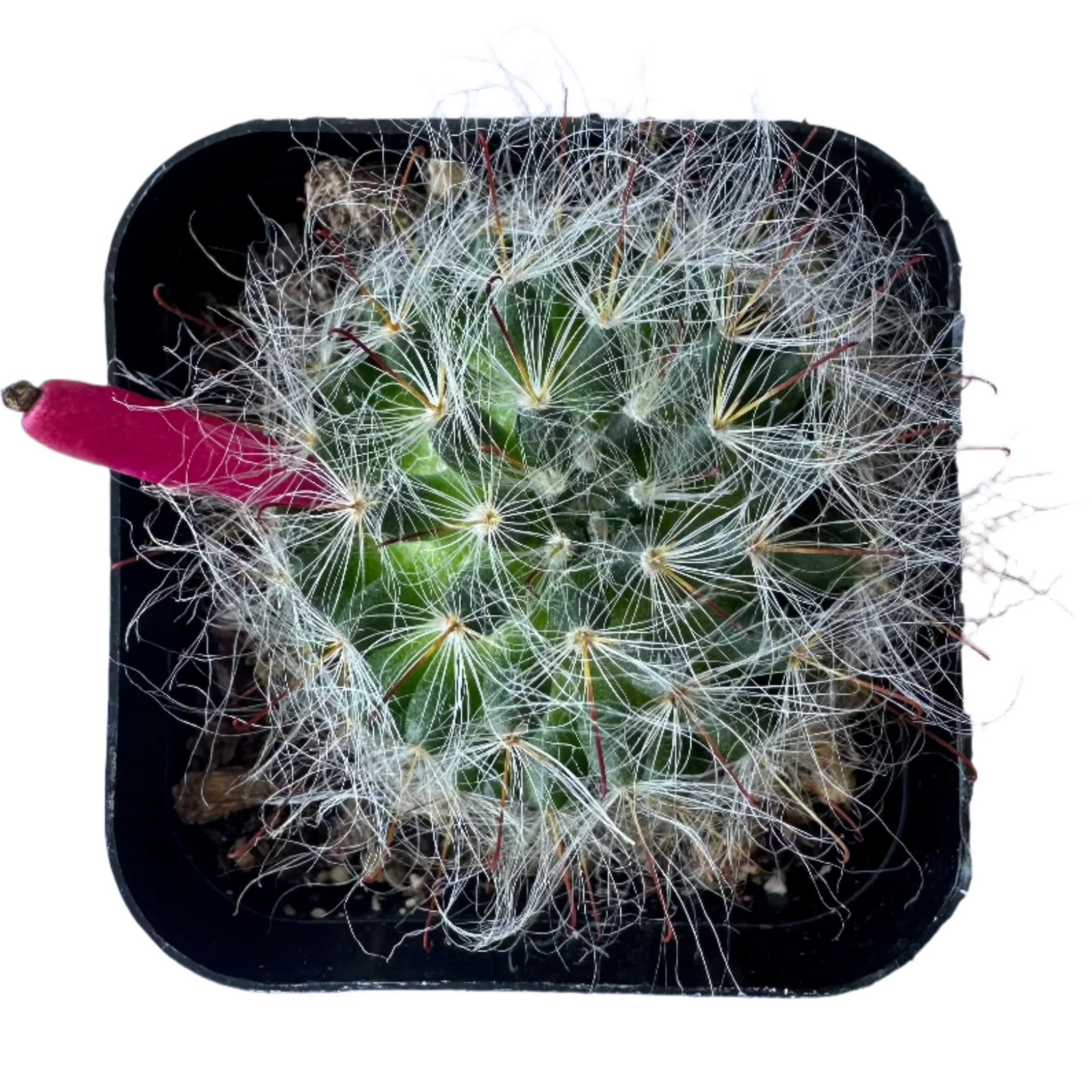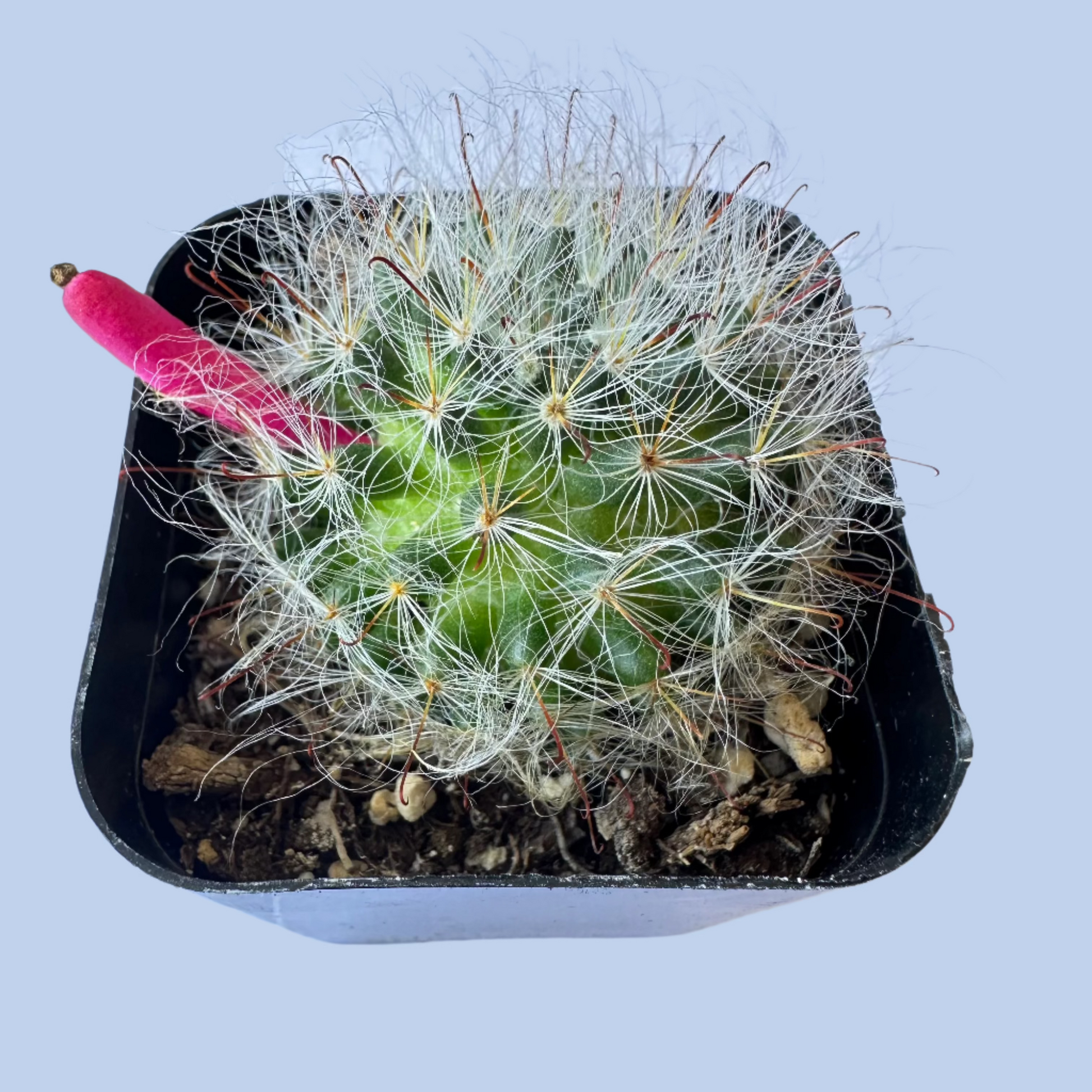SEAH
Mammillaria guelzowiana
Mammillaria guelzowiana
No se pudo cargar la disponibilidad de retiro
Morphological Characteristics
Mammillaria guelzowiana is a small, globular cactus species belonging to the Cactaceae family. It is notable for its dense covering of fine, silky white hairs and spines, giving it a fluffy appearance. The stems are spherical to short cylindrical, typically reaching up to 5 cm (2 inches) in height and about 4–6 cm (1.5–2.5 inches) in diameter. The plant may grow singly or form small clusters over time.
One of the most striking features of Mammillaria guelzowiana is its large, vibrant flowers relative to the size of the plant. The funnel-shaped flowers are bright magenta to deep pink and can reach up to 5 cm (2 inches) in diameter, often nearly covering the plant when in full bloom. The blooming period is usually in late spring to early summer. Following flowering, the plant produces club-shaped, reddish fruits containing small black seeds.
Growth Habits
Mammillaria guelzowiana is a slow-growing cactus native to the high-altitude regions of Durango, Mexico. It thrives in arid environments with well-draining, rocky soils. The plant is adapted to cool, dry conditions and is accustomed to temperature fluctuations between day and night. It prefers full sun to partial shade, with adequate ventilation to prevent excessive humidity around the plant.
Maintenance Points
• Lighting: Requires bright light with some direct sunlight. However, intense midday sun, especially in hot climates, may cause sunburn. Providing some shade during the hottest part of the day can be beneficial. Adequate light is essential for flowering.
• Watering: During the growing season (spring and summer), water moderately, allowing the soil to dry out between waterings. Overwatering can lead to root rot. In the dormant season (fall and winter), reduce watering significantly or withhold water entirely, especially in cooler conditions.
• Soil: Use a well-draining cactus or succulent potting mix. Incorporate coarse sand, perlite, or pumice to improve drainage and aeration. The soil should not retain excess moisture.
• Temperature: Ideal temperatures range between 15–25°C (59–77°F). The plant is relatively cold-tolerant and can withstand temperatures down to -7°C (20°F) if kept dry. Protection from frost is recommended. In regions with cold, wet winters, it is best to grow the plant in containers that can be moved indoors.
• Fertilization: Feed sparingly during the growing season with a diluted, low-nitrogen, water-soluble fertilizer formulated for cacti and succulents. Apply fertilizer once a month. Avoid fertilizing during the dormant season.
• Potting: When growing in containers, select a pot with drainage holes to prevent water accumulation. Shallow pots are suitable due to the plant’s small root system. Repotting is recommended every 2–3 years in early spring or when the plant has outgrown its container.
• Humidity: Prefers low-humidity environments. Ensure good air circulation to prevent fungal diseases.
Reproduction Method
Mammillaria guelzowiana can be propagated through seeds and occasionally through offsets, although it is primarily solitary.
1. Seeds:
• Sowing: Collect seeds from ripe fruits after flowering. Clean and dry the seeds before sowing.
• Planting: Sow seeds on the surface of a well-draining, sterile cactus seed mix. Lightly press the seeds into the soil without covering them completely, as they require light for germination.
• Germination: Maintain consistent moisture by misting the soil surface but avoid waterlogging. Cover the container with a transparent lid or plastic wrap to retain humidity.
• Light and Temperature: Provide bright, indirect light and maintain temperatures between 21–27°C (70–80°F). Germination may take several weeks to months.
• Transplanting: Once seedlings are large enough to handle, transplant them carefully into individual pots with appropriate cactus soil mix.
2. Offsets:
• While Mammillaria guelzowiana is primarily solitary, it may occasionally produce offsets.
• Removal: Gently detach offsets from the parent plant using a clean, sharp tool.
• Callusing: Allow the offsets to dry and callus over for a few days in a shaded area.
• Planting: Place the callused end into well-draining cactus soil.
• Aftercare: Provide similar care as for mature plants, keeping the soil slightly moist until roots establish.
Additional Tips
• Pest Control: Monitor for pests such as mealybugs and spider mites. If infestations occur, treat promptly with insecticidal soap or neem oil.
• Disease Prevention: Avoid overwatering and ensure good air circulation to prevent fungal diseases and rot.
• Flowering Encouragement: Provide adequate light and a cool, dry rest period in winter to promote flowering in the following season.
• Handling Precautions: The spines can be sharp; handle the plant with care to avoid injury.
By providing appropriate care, Mammillaria guelzowiana can be a delightful and rewarding addition to your cactus collection, offering unique beauty with its fluffy appearance and striking flowers that enhance any indoor or outdoor garden space.
Care Tips
Care Tips
Compartir
